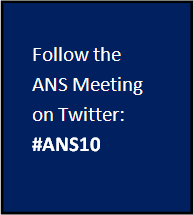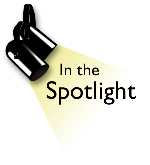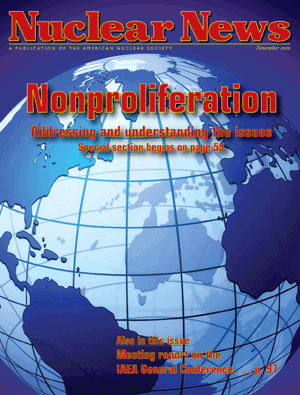Honing the new nuclear energy narrative
As a record number of nuclear leaders meet during the American Nuclear Society's 2010 Winter Conference in Las Vegas (of all places), the men and women of the U.S. nuclear community are all asking a version of the same question: What now? Clearly, the election results of November 2 will impact U.S. nuclear policy for the next two years, and probably reverberate much longer than that.


 As we gather to discuss innovations and the next steps forward in nuclear development, I am taking advantage of our new ANS blog site to talk about some communications initiatives undertaken by the Society. As nuclear professionals, we have an obligation to share our technical understanding and scientific perspective with policymakers, educators, students, and the public-and we also need to be sure that we are communicating effectively with each other so that we can speak to today's energy issues with a unified voice.
As we gather to discuss innovations and the next steps forward in nuclear development, I am taking advantage of our new ANS blog site to talk about some communications initiatives undertaken by the Society. As nuclear professionals, we have an obligation to share our technical understanding and scientific perspective with policymakers, educators, students, and the public-and we also need to be sure that we are communicating effectively with each other so that we can speak to today's energy issues with a unified voice. The
The  This year's
This year's  The November issue of Nuclear News will soon be available electronically to ANS members. The issue contains a special section on nuclear nonproliferation, featuring the following articles:
The November issue of Nuclear News will soon be available electronically to ANS members. The issue contains a special section on nuclear nonproliferation, featuring the following articles: A friend wrote me a nice note the other day that has brightened my outlook on the future of nuclear energy in the United States. Like many people who write about both the industry and the technology, I have been focusing on the complex story of nuclear loan guarantees. As an Annapolis, Md., resident and DC area worker, it was difficult to escape the frequently negative news coverage of the troubled Calvert Cliffs unit 3 project.
A friend wrote me a nice note the other day that has brightened my outlook on the future of nuclear energy in the United States. Like many people who write about both the industry and the technology, I have been focusing on the complex story of nuclear loan guarantees. As an Annapolis, Md., resident and DC area worker, it was difficult to escape the frequently negative news coverage of the troubled Calvert Cliffs unit 3 project. The
The  The
The  On September 17, the
On September 17, the  Over the next 25 years, the demand for electricity in the United States is expected to rise by 30 percent. This is a trend that will almost certainly accelerate as we move increasingly toward an electricity-based transportation infrastructure and plug-in hybrids and we replace fossil fuels. In fact, as the lead Republican sponsor of the
Over the next 25 years, the demand for electricity in the United States is expected to rise by 30 percent. This is a trend that will almost certainly accelerate as we move increasingly toward an electricity-based transportation infrastructure and plug-in hybrids and we replace fossil fuels. In fact, as the lead Republican sponsor of the  The 24th Carnival of Nuclear Energy Blogs is up at
The 24th Carnival of Nuclear Energy Blogs is up at